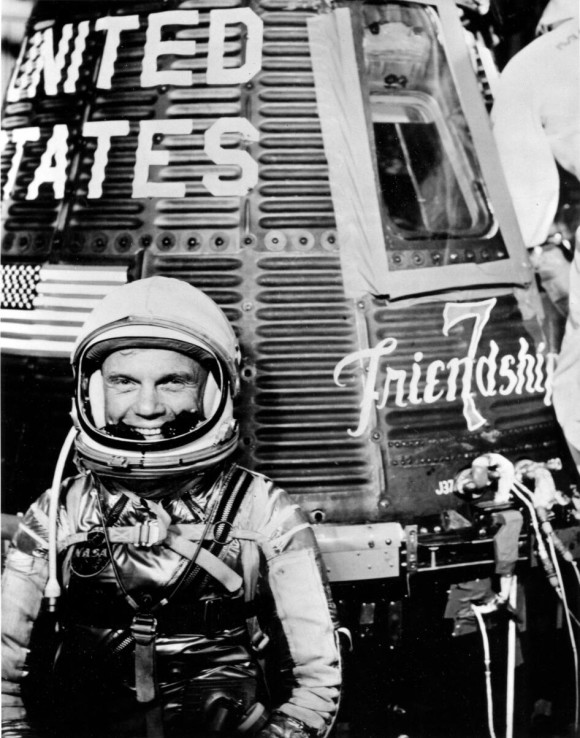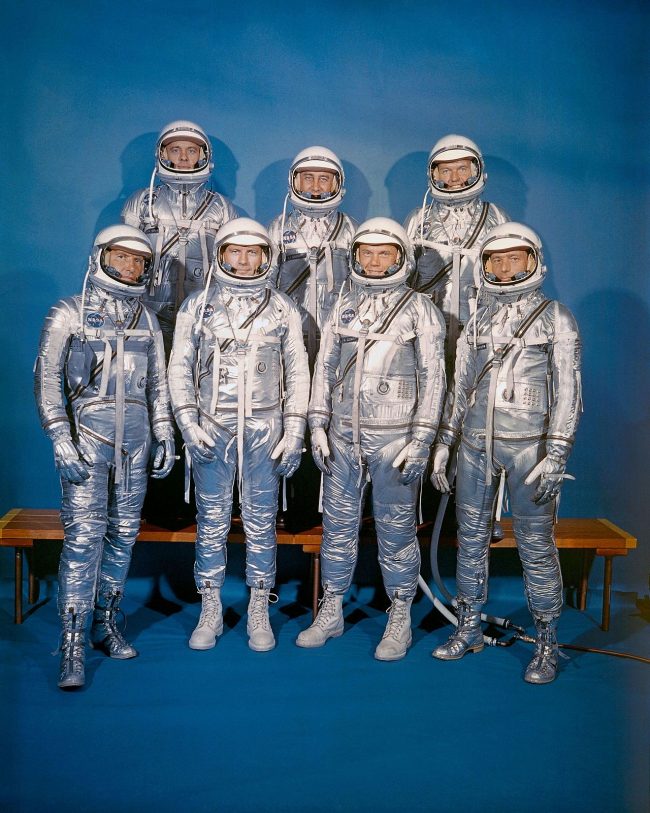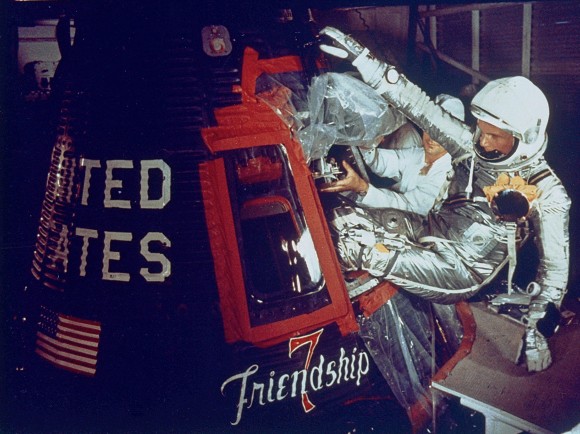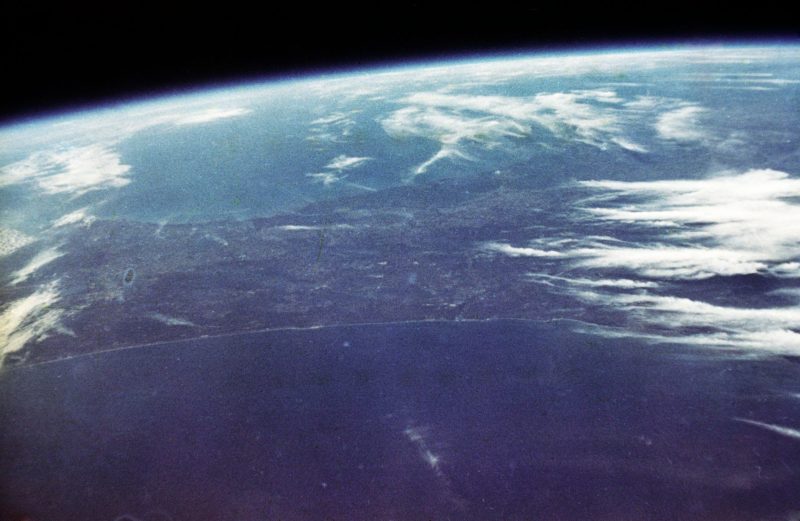
John Glenn – 1st American in orbit – 60 years ago today
John Glenn became the first American to orbit Earth on February 20, 1962, 60 years ago today. In 4 hours and 55 minutes, he circled the globe three times in his space capsule Friendship 7. The feat made Glenn a national hero and a household name.
It was the ’60s, and the space race was on. The U.S. and the Soviet Union competed to achieve important firsts in space.
Glenn was one of the first American astronauts, a member of the group NASA called the Mercury 7. Author Thomas Wolfe immortalized them in his masterly 1979 book The Right Stuff. Glenn and his fellow astronauts rode cramped Mercury space capsules into the unknown.
In those days, NASA astronauts gave personal nicknames to their space capsules. Glenn and his family decided on the word Friendship, adding the number 7 to honor his fellow Mercury astronauts. But NASA’s official name for Glenn’s mission was Mercury-Atlas 6. Mercury for the Roman god of speed and Atlas 6 to indicate that this was the sixth mission to launch atop the powerful Atlas rocket.
The 2022 lunar calendars are still available. Order yours before they’re gone!

“Godspeed, John Glenn”
Atlas rocket and weather problems forced NASA to postpone Glenn’s orbital launch four times. Finally, with the weather cooperating and the Atlas problems resolved, Glenn strapped into Friendship 7 early on the morning of February 20, 1962. Schoolchildren (including me) watched on television as the countdown ended and Glenn blasted into space. As History.com explained:
As mission control performed its final system checks, test conductor Tom O’Malley initiated the launch sequence, adding a personal prayer, ‘May the good Lord ride all the way,’ to which Carpenter, the backup astronaut for the mission, added, ‘Godspeed, John Glenn.’ Carpenter later explained that he had come up with the phrase on the spot, but it did hold significance for most test pilots and astronauts: ‘In those days, speed was magic … and nobody had gone that fast. If you can get that speed, you’re home-free.’
In other words, to attain even a low-Earth orbit, the challenge is to reach a fast-enough speed. The mean orbital velocity needed to maintain a stable low-Earth orbit is about 17,000 miles per hour (28,000 km/h, or 7.8 km/s). Glenn reached that speed, a first for any American.
Glenn wasn’t the first American in space. He was third, after the short suborbital flights of Alan Shepard (May 1961) and Virgil “Gus” Grissom (July 1961). And he wasn’t the first earthling to orbit Earth. Again, he came in third, following two Russian cosmonauts: Yuri Gagarin (April 1961) and Gherman Titov (August 1961). Glenn’s orbital flight meant that the U.S. was catching up to the Soviet Union in space.

Heat shield danger
John Glenn’s flight wasn’t without its scary moments. As History.com explained:
During his second orbit, Mission Control noticed a sensor was issuing a warning that Friendship 7’s heat shield and landing bag were not secure, putting the mission and Glenn in danger. Officials did not immediately inform Glenn of the potential problem, instead asking him to run a series of small tests on the system to see if that resolved the issue, which eventually clued Glenn in to their concerns. After a series of discussions, it was decided that rather than following standard procedures to discard the retrorocket (an engine designed to slow down the capsule upon reentry), Glenn would keep the rocket in place to help secure the heat shield.
In fact, all was well. Glenn successfully reentered the Earth’s atmosphere and splashed down in the Atlantic Ocean. Ships, helicopters and frogmen successfully recovered him 800 miles (1,300 km) southeast of Bermuda. Later, when engineers inspected the recovered capsule, they found that the heat shield was fine. A faulty sensor had detected a problem that didn’t exist.
John Glenn still inspires
John Glenn’s flight made him an instant national hero. He rode his fame to a long career in politics that included 25 years in the Senate and a presidential bid in 1984. Glenn returned to space at age 77 aboard the space shuttle Discovery in 1998. His mission’s primary scientific aim was to study the effects of spaceflight on seniors. Glenn passed away at age 95 on December 8, 2016.
The space race is history, but Glenn’s flight 60 years ago continues to inspire. Shortly before his death, Hollywood commemorated his mission and the many people who made it possible in the popular 2016 film Hidden Figures.

Bottom line: John Glenn became the first American to orbit Earth on February 20, 1962, 60 years ago today. His space capsule was the Friendship 7.
Read more from NASA: Glenn orbits Earth
Read more from History.com: 7 things you may not know about John Glenn
The post John Glenn 1st American in orbit 60 years ago today first appeared on EarthSky.
0 Commentaires